

Mountaineering exposes us to challenge, adventure, and vast, overwhelming natural beauty, making it unlike any other sport on earth! Personally, the allure of mountaineering first took hold of me after I devoured the book “Into Thin Air” in middle school, and the sport has maintained a firm grasp on me ever since!
Once I moved to Colorado, my love of mountaineering came to fruition. I trained for and summited Mt. Baker and Mt. Rainier in Washington in my late twenties.
In 2023, I climbed and skied Mt. Bear, an extremely remote 14er in the Wrangell St. Elias National Park and Preserve with my husband. I’ve also climbed many other mountains in Colorado.
I look forward to continuing to mountaineer for the rest of my life!
I’ve experienced firsthand the physical, mental, and emotional demands of mountaineering, which include contending with high altitude, traveling on foot or skis up and down steep slopes, extreme weather, remoteness and isolation, and danger.
While proper physical training is vital for a successful, safe, enjoyable mountaineering trip and is heavily emphasized during trip preparation, good nutrition is often overlooked. However, the truth is that proper nutrition is essential for sustaining energy, endurance, and overall performance during mountaineering expeditions.
As a nutritionist and mountaineer, I understand the importance of nutrition for mountaineering at a biochemical and experiential level. In this article, I’ll discuss the ins and outs of food for mountaineering, including the nutritional demands of mountaineering, how to build a solid nutrition foundation months before your trip, and how to prepare and plan your meals. If you want more guidance after reading this blog, consider registering for my on-demand masterclass, Nutrition Essentials for Mountaineering!
Please note that I am an affiliate for some of the products I’ve linked to in this post. If you click the link here and make a purchase, I may earn a commission at no extra cost to you.
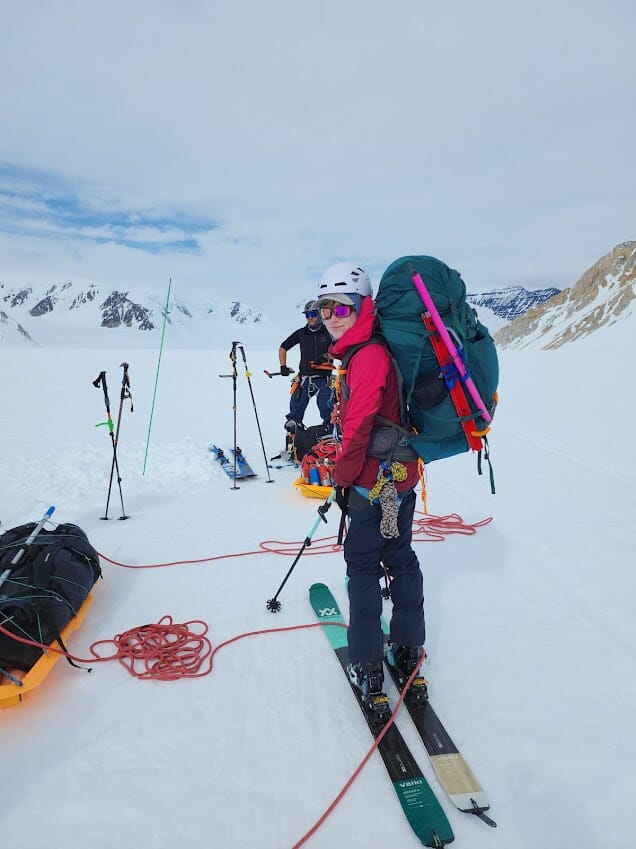
Mountaineering is an endurance event that primarily uses your body’s aerobic energy system to make adenosine triphosphate (ATP), the cellular energy currency that fuels nearly every bodily function, including exercise. The aerobic energy system is excellent at fueling slow, steady, long-duration exercise, such as trudging up a mountain!
The aerobic energy system can use glucose (sugar) and fat to create ATP. Sometimes, the aerobic energy system also uses protein to make ATP. However, we don’t want to rely heavily on protein as an energy source because converting it to energy is inefficient, and we need to reserve protein for muscle repair and recovery.
Your anaerobic energy system, on the other hand, is excellent at fueling short, intense bursts of activity. The anaerobic energy system is fueled by glucose. You may engage in short bouts of anaerobic activity while mountaineering, but aerobic activity comprises the bulk of the exercise. (Source)
When engaging in an aerobic sport like mountaineering, we want to be able to rely heavily on fat to create ATP because being “fat-adapted” allows us to maintain a steady work output for a long duration without “bonking.”
Conversely, when you are primarily a sugar-burner, you’ll need to eat constantly during aerobic activity to keep your energy levels up. You will also be more prone to “bonking” during long bouts of aerobic exercise, like mountaineering.
Many athletes are predominantly sugar-burners. If you want to become a more metabolically efficient mountaineer capable of burning fat for fuel, you’ll need to adjust your diet to “train” your body to burn more fat. I’ll get into how to do this under the “Building a Solid Nutrition Foundation” section below.
Based on the physiological demands of mountaineering, we want to be able to utilize a significant amount of fat for fuel (both from our bodies and our diets) and carbs as needed on top of that.
Important note: If you are performing mixed climbing while mountaineering (e.g., climbing with ice tools or your hands) or skiing down the mountain after summiting (downhill skiing is a bit like interval training), these are anaerobic activities. You’ll need to fuel properly with carbohydrates to support these types of movements.
The physical challenges of mountaineering burn a LOT of calories. You must eat enough calories to support your mountaineering training before the trip and fuel your body during the trip itself.
Caloric needs vary based on many factors, including your training volume pre-trip, the intensity of your physical activity during the trip, your body weight, age, sex, health status, the ambient temperature, and the amount of weight you are carrying. A sports nutritionist can help you determine your calorie needs and plan how to fuel your body accordingly during your training and your mountaineering trip.
If you can’t work with a nutritionist, I recommend using a total daily energy expenditure calculator and a moderate or high activity level factor to approximate your calorie needs during your training and mountaineering trip.
High altitude can raise your metabolism and decrease your appetite. In other words, you need to eat more but may feel less motivated to eat! It is important to be aware of these potential effects of altitude so you can be diligent about feeding yourself even when your body’s hunger signals are dampened. (Source)
Eating a balanced diet while mountaineering can mitigate muscle fatigue, altitude sickness, and loss of muscle mass (during extended mountaineering trips) and keep up your energy, mood, and morale.
You’ll learn more about how to build a solid nutrition foundation in the section below.
The nutrition foundation you build leading up to your trip (which you will hopefully maintain after your trip too) will affect your health and performance on your mountaineering adventure.
If you’ve never paid much attention to your diet, start to pay attention and make strategic changes at least 3 months before your climb.
Building a solid nutrition foundation for mountaineering involves 3 things:
As we discussed earlier, the nutritional demands of mountaineering primarily rely on your body’s aerobic energy system. Ideally, you want to be a proficient fat-burner as a mountaineer but also have the metabolic flexibility to use some carbs for fuel.
Your dietary macronutrient ratios (protein, carbs, and fat) profoundly influence whether you are a fat-burner or a sugar-burner during aerobic exercise. If you eat a carb-dominant diet with insufficient fat and protein, you are training your body to primarily be a sugar-burning body. Conversely, when you eat the right amount of carbs (not too much!) and a robust protein and healthy fat intake, you are training your body to use fat and glucose for fuel.
Please note that the macronutrient guidelines provided below are just that – guidelines. In addition, you’ll notice that nutrition during training differs from nutrition while you’re on the mountain. Athletes in other sports fuel differently during training versus racing; think about the mountaineering expedition as your “race;” you’re going to fuel slightly differently during it to perform your best. One of the main differences is that you’ll likely consume more carbs and less protein during your mountaineering trip than you will during training.
The proper macronutrient intake for you depends on numerous factors. If you need help personalizing your nutrition plan and food for mountaineering, I recommend partnering with a sports nutritionist who can work with you to develop a personalized nutrition plan.
Research shows that the body preferentially burns more carbohydrate at altitude. Carbohydrate-rich foods may be particularly important to consume at high camps and on summit day. (Source)
In your daily diet, prioritize eating whole-food carbohydrates. Whole-food carbohydrates, or carbohydrate-containing foods that have been minimally processed, should comprise most of your carbohydrate intake as a mountaineer. Whole-food carbohydrates produce a gentle rise in blood sugar, promoting stable, sustainable energy. This is valuable for giving you energy in daily life and during training!
Whole-food carbohydrates also contain fiber, vitamins, minerals, and antioxidants. These compounds support multiple aspects of your health that influence athletic performance and recovery, including gut health, cellular energy production, and exercise recovery. Whole-food carbohydrates include sweet potatoes, white potatoes, root vegetables, legumes, and whole grains such as quinoa and steel-cut oats.
Antioxidants in whole-food carbs such as fruit may also help combat oxidative stress experienced at altitude.
Refined carbohydrates are carbohydrates that have gone through a manufacturing process. This manufacturing process often turns the carbs into flour and flour-based foods like pasta, bread, and crackers. Refined carbs also include sugars, such as table sugar.
Refined carbohydrates are rapidly digested in the small intestine. Once these rapidly-digested carbs are absorbed, they can spike your blood sugar. Eating lots of refined carbs and continuously experiencing blood sugar fluctuations can negatively impact your energy, focus, and cognition, which is a big problem in your daily life and while mountaineering!
Refined carbs are also low in (or completely devoid of) vitamins, minerals, and antioxidants. (Source, Source, Source)
Pro tip: Fresh fruits and vegetables don’t hold up for very long in the backcountry. If your mountaineering trip is going to last more than a few days, you might want to bring a veggie or veggie/fruit powder with you as a source of supplemental antioxidants. Organifi Green Juice powder is a good option that you can simply mix with water.
In other words, prioritize eating whole-food carbs daily during your training and bring some along on your mountaineering trip.
There is a time and place for refined carbohydrates, such as during a strenuous summit day when you need rapidly-digesting energy or if you’re experiencing a low appetite. In this case, refined carbs such as gels and Honey Stinger waffles may be just what you need!
In summary, refined carbs should be used strategically during your mountaineering adventures, and not comprise the bulk of your carbohydrate intake.
What about protein? Protein is vital for many things, but energy production during exercise isn’t one of them! Our bodies prioritize using carbohydrates and fats for energy production. Protein, conversely, is used to rebuild protein-containing tissues, maintain proper immune function, and stabilize blood sugar, all of which are functions that affect your health and performance.
While there’s yet to be a consensus on how much protein endurance athletes, like mountaineers, should eat daily, scientists and nutritionists agree that the recommended dietary intake (RDI) for protein of 0.8 grams/kg body weight/day is too low for active people. Mountaineers likely have higher protein needs than sedentary people due to increased protein turnover triggered by demanding exercise.
Protein needs are highly individual. I discuss protein targets for mountaineers in my masterclass, Nutrition Essentials for Mountaineering.
Fats provide a vital source of energy while mountaineering and during your training. Once you’ve figured out your protein and carbohydrate intakes, fat will make up the rest of your calories.
Your daily fat intake should consist of healthy, anti-inflammatory fats. Healthy fats help regulate inflammation (which can be exacerbated by strenuous exercise) and hormone production and support satiety. Examples of healthy fats include:
Conversely, we want to avoid inflammatory fats, namely industrial seed oils. Industrial seed oils (often referred to as “vegetable oils”) are the oils expressed from oilseeds, including canola (rapeseed), corn, cottonseed, grapeseed, safflower, soybean, and sunflower oils.
Industrial seed oils are recent additions to the human diet (we only began consuming them in significant amounts in the 20th century), and research suggests that consuming these oils drives inflammation and, possibly, chronic diseases like cardiovascular disease. (Source)
You can find industrial seed oils in many snack foods and freeze-dried meals, so try to keep an eye out. Occasionally eating industrial seed oils is fine, but these aren’t oils you should be eating frequently.
On your mountaineering trip, eating additional fats can also help you feel warm in cold conditions. I recommend bringing nuts and nut butter packs such as Trail Butter, trail mix, cheese, cured meats, olive packs, and olive oil packs to easily add fats to your snacks and meals.
I’ve noticed that many articles about food for mountaineering primarily tell mountaineers to pack in the calories (which is a legitimate recommendation) but with little to no consideration for the nutritional quality of the foods consumed or the dietary needs of the climber.
As a nutritionist and avid mountaineer, I believe we must consider our caloric needs and our bodies’ nutritional needs at a more detailed level. Mountaineering is extraordinarily demanding, and if you can nourish your body while climbing, rather than just eating to survive, you will feel and perform better!
The macronutrient recommendations I provided above outline how to make quality choices with your food. Now, let’s talk about how to meal plan for your mountaineering trip!
Meal planning for your mountaineering expedition is vital. You need to plan ahead to bring the proper amount of food for your trip and ensure that the food is the appropriate weight (not too heavy) and not too bulky. You also need to plan to ensure you’ll have enough calories, protein, carbohydrates, fat, and micronutrients during your trip.
Here are some examples of nutrient-dense, lightweight foods suitable for mountaineering:
When planning the food you’re going to bring, try to minimize the amount of packaging you’ll generate. Also, think about ways you can minimize cooking time when you’re on the mountain. Energy and resources are limited on the mountain, so you probably won’t want to make cooking a major production!
Variety is also important. When your appetite is waning due to altitude and exhaustion, it’s important that you have a wide enough variety of foods to choose from to stimulate your appetite!
For long-duration mountaineering trips (2+ weeks in length), I recommend bringing a multivitamin to cover your micronutrient bases. Of course, consult with your physician or nutritionist before incorporating a multivitamin (or any other nutritional supplement) to make sure it is right for you.
If you are mountaineering as part of a guided trip, talk with your guides well in advance to find out what the food situation will look like. This is just as crucial a preparation step as your muscular endurance workouts and careful selection of mountaineering gear! When you talk with your guides beforehand, you can find out what food will be provided and then determine what food you need to bring to round out your intake.
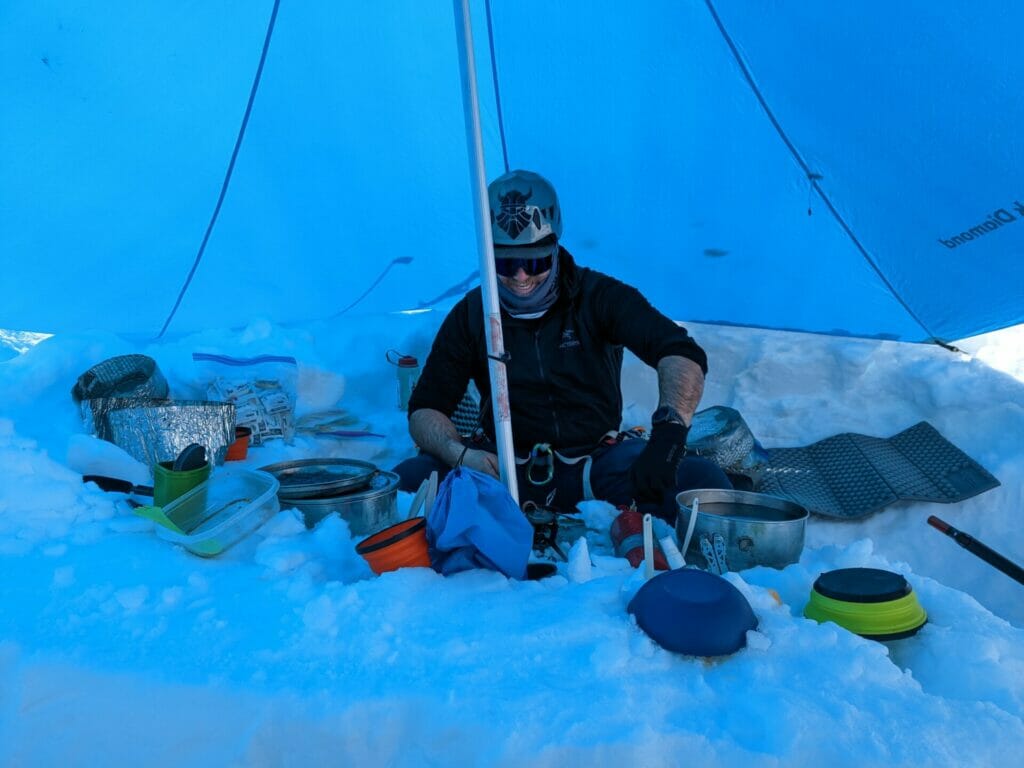
High altitude can cause dehydration because the lower humidity and increased breathing rate your body experiences at altitude cause your body to lose fluid more quickly than at lower altitudes.
Furthermore, your kidneys sense the low oxygen levels at altitude and release more erythropoietin (EPO) from the peritubular cells to stimulate red blood cell production. The kidneys also prompt you to pee more to decrease your blood plasma volume and make your hemoglobin more concentrated; hemoglobin is the primary carrier of oxygen in your body.
In addition, the physical exertion of mountaineering also causes water loss through respiration.
Finally, cold temperatures (typical in mountaineering!) can cause cold diuresis, a phenomenon that your body initiates when it senses cold environments and increases blood flow to your body’s core.
Altogether, mountaineering creates a prime environment for dehydration if you aren’t careful!
Dehydration resulting in losing 2-3% of body mass may impair endurance performance, such as mountaineering. (Source)
Just like protein, carb, and fat intake, hydration needs are highly individualized. A VERY basic rule of thumb is to hydrate until your urine is a pale straw color. If you want more specific hydration guidance, I cover this in my Nutrition Essentials for Mountaineering masterclass.
It is also important to consume electrolytes when mountaineering, provided you don’t suffer from a health condition or take medications that preclude using supplemental electrolytes. I often recommend using a low-osmolality electrolyte beverage like Skratch Labs Sport Hydration Mix.
As extremely fit, ambitious, and hard-charging mountaineers, we should treat our bodies like sports cars; putting the highest-quality fuel (food) into our bodies ensures that we’ll perform to our highest capacity.
On my mountaineering trips, I’ve found that snacks are an area where mountaineers often compromise on their food quality. Let’s discuss how to choose quality snacks for sustained energy while mountaineering.
First, I recommend avoiding snacks that contain artificial colors and highly-processed sweeteners. These low-quality, cheap food additives honestly don’t deserve a place in your mountaineering diet.
Artificial colors, flavors, and sweeteners are also linked to many health issues, including gastrointestinal problems and blood sugar imbalances. If you aim to be a mountaineer for a lifetime, your long-term health should be a priority. Your food choices are cumulative and will affect your health over the long term.
Examples of ultra-processed, artificial ingredients include the artificial food dyes Blue 1, Blue 2, Yellow 5, and Red 40, the artificial sweetener sucralose, and the highly-processed sugar high-fructose corn syrup.
Instead, choose snacks that are either whole foods or contain whole-food ingredients, such as nuts, nut butter packets, dates and other dried fruits, cheese, high-quality jerky or salami, trail mix, and energy bars made with quality ingredients. Chocolate also has a place on this list! Just choose chocolate with simple ingredients and no high-fructose corn syrup, please!
Carbohydrate-oriented snacks, such as dried fruit, provide a quick-release energy source because glucose naturally occurring in the fruit can rapidly produce ATP (cellular energy) inside your body.
Fats like those found in cheese, nuts, nut butter, and cured meats provide a slow-release energy source. I recommend pairing quick-release and slow-release energy sources to experience sustained energy while climbing.
Pro tip: Avoid snacks that crumble into a million pieces (such as chips!) or otherwise get messy. The last thing you want to do is make a mess of your mountaineering food and get it on your gear or become otherwise inedible.
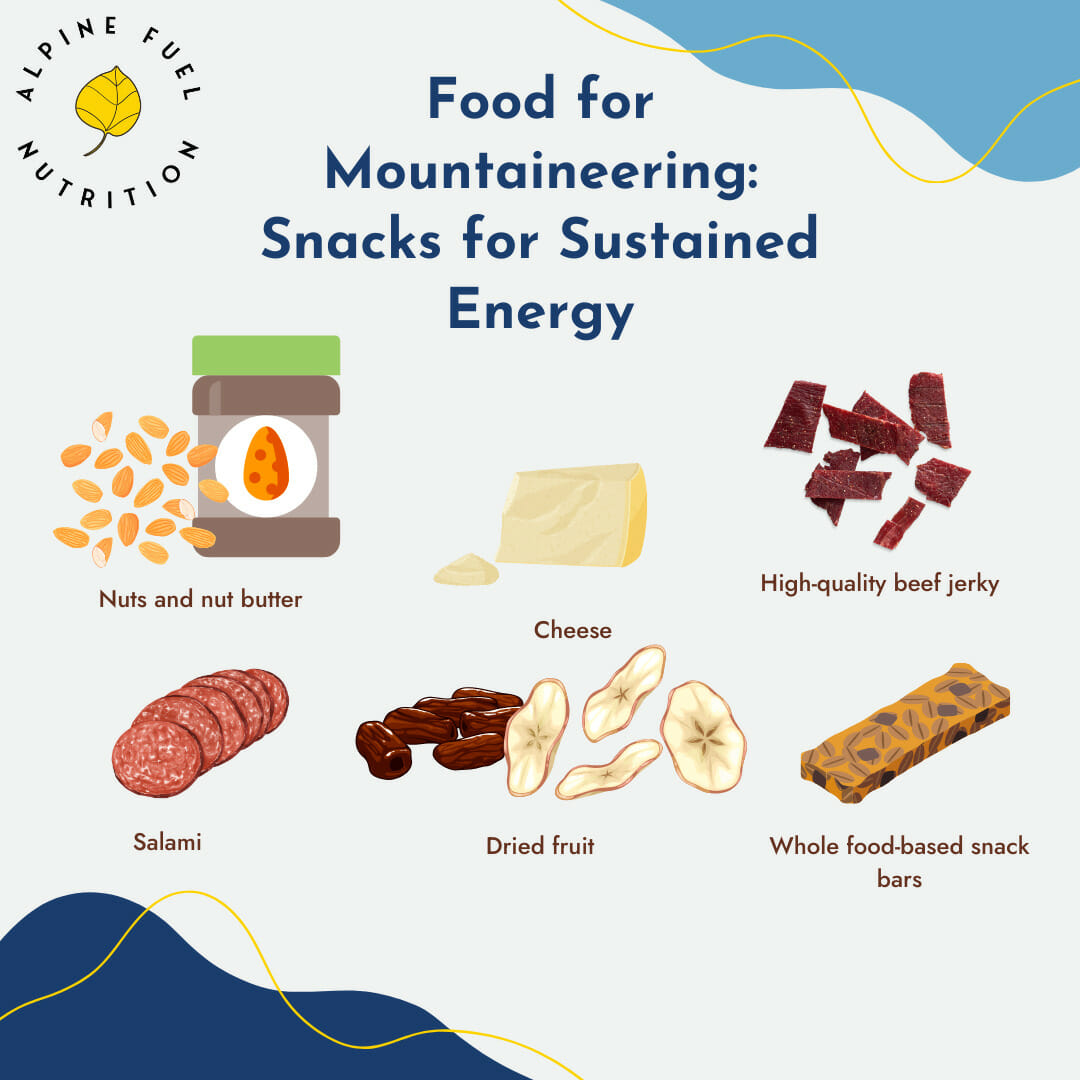
Gastrointestinal (GI) issues are common at altitudes greater than 2,500 meters (about 8,200 feet). Why does altitude cause GI issues?
Research indicates that high altitude can reduce blood flow to the gut, causing hypoxia in the gut, oxidative stress, and damage to the intestinal lining. The physical exertion of mountaineering combined with high altitude may adversely affect the gut even more significantly. (Source)
GI problems are common in individuals with acute mountain sickness (AMS). Potential GI problems associated with AMS include loss of appetite, nausea, diarrhea, and vomiting. Of course, if you’re dealing with AMS, the only real solution is to descend.
If you don’t have AMS but are dealing with GI issues, here are some tips for supporting your body:

At the end of a long day of climbing up a mountain, choosing the right foods to replenish your body is essential! Post-climb nutrition affects muscle repair and glycogen replenishment. A key element of post-climb nutrition is ensuring you eat a meal that contains sufficient carbohydrates AND protein.
Protein needs vary vastly from one mountaineer to the next based on body weight, muscle mass, and sex. However, at the very least, I recommend consuming 25 grams of protein in your post-climb meal to support muscle repair. Your body will use amino acids from dietary protein to repair damaged muscle tissues so you can wake up the following day (or night) and continue climbing.
I also recommend aiming for a 2:1 ratio of carbohydrates to protein in your post-climb meal. This strategy will support balanced blood sugar and help prevent you from overloading on carbs and skimping on protein, which I’ve found many athletes are prone to do.
If you’re cooking at camp, this could look like making a “fried rice” dish with about a hand-sized portion of white rice and a half-hand-sized portion of rehydrated chicken, with some veggies and fat (perhaps from an olive oil packet) mixed in to support satiety.
If you’re bringing pre-made freeze-dried meals to eat on your climb, carefully scour the nutrition label before your trip to ensure the meal isn’t just carbs! I’ve noticed many freeze-dried meals are heavy on carbs but very low in protein (which is a problem).
Finally, having a satisfying post-climb meal is just as important psychologically as physically. Few things are more demoralizing than not having food you’re looking forward to eating on your trip. Food for mountaineering should be delicious and nutritious!
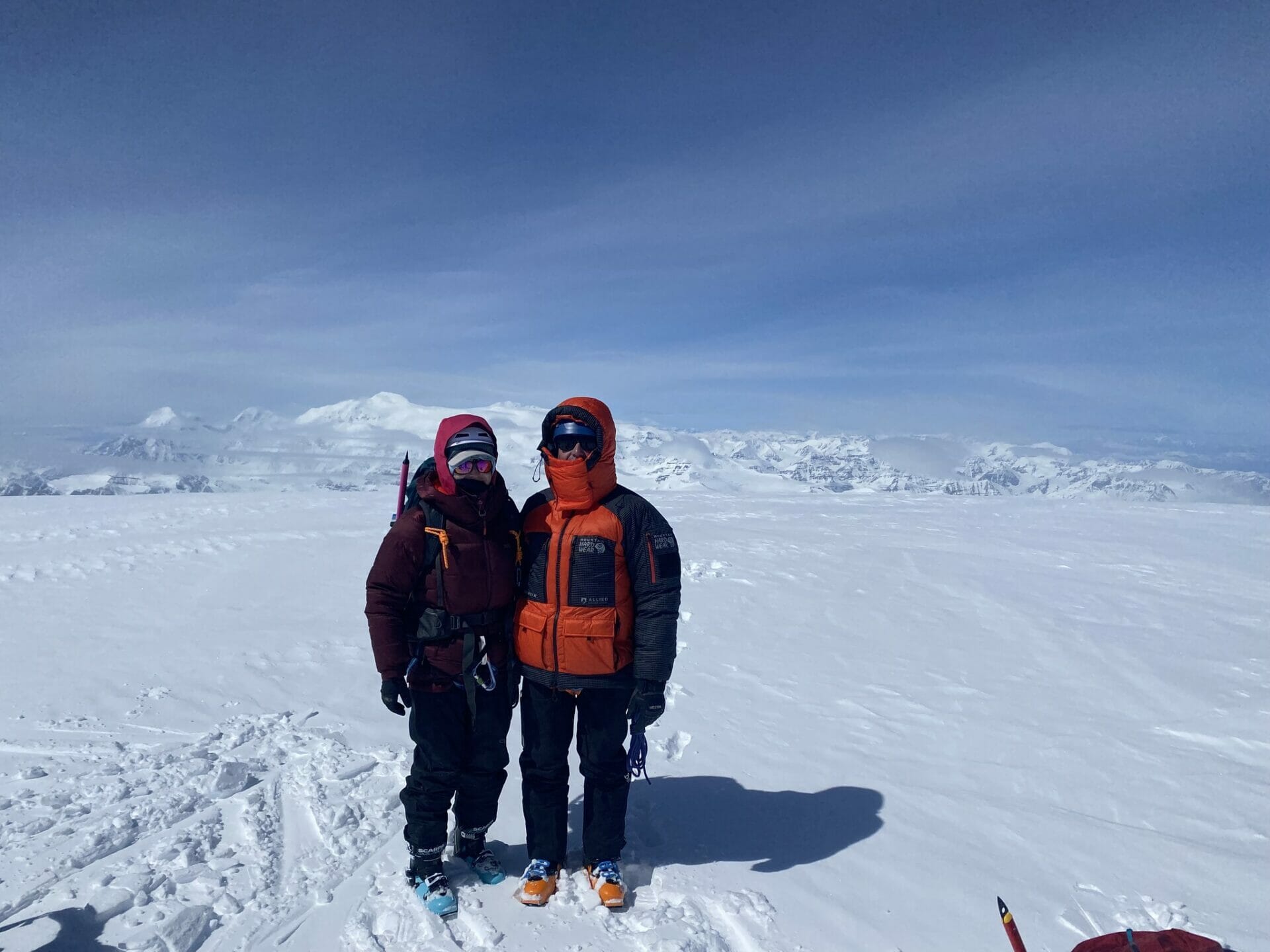
As a mountaineer, food is fuel for your high-performing body! Feed your body well, and you will feel and perform your best on the mountain. Fuel your body improperly, and you may feel unwell and unable to reach your goals on the mountain.
Selecting food for mountaineering starts with the food choices you make in your daily life. Think of this as “dietary training” for your mountaineering trip; I guarantee it is just as important as the physical and mental training you’re doing for your trip!
Once you understand the nutritional demands of mountaineering, you can build your nutrition foundation accordingly. Prepare and plan your meals well before your trip, and remember to stay hydrated!
When you have proper nutrition before and during your mountaineering expedition, you will likely have a safe, successful, and enjoyable mountain adventure!
It is crucial to remember that mountaineering nutrition is highly individual, so be sure to listen to your body and account for your unique health needs and food preferences.
If you need personalized nutrition guidance to support your mountaineering training and expedition, I would love to help! You can learn more about how I work with mountain athletes and contact me for more information here.
If you prefer a DIY approach, consider my on-demand masterclass, Nutrition Essentials for Mountaineering! This comprehensive masterclass is just $29 and provides a wealth of information on how to optimize your nutrition for mountaineering that goes above and beyond what you learned in this blog!
Content covered in the masterclass that goes above and beyond this blog includes:
The content provided on this nutrition blog is intended for informational and educational purposes only. It is not a substitute for professional medical advice, diagnosis, or treatment. Always seek the advice of your physician or other qualified health provider with any questions you may have regarding a medical condition. Never disregard professional medical advice or delay in seeking it because of something you have read on this blog.
The information and recommendations presented here are based on general nutrition principles and may not be suitable for everyone. Individual dietary needs and health concerns vary, and what works for one person may not be appropriate for another.
I make every effort to provide accurate and up-to-date information, but the field of nutrition is constantly evolving, and new research may impact dietary recommendations. Therefore, I cannot guarantee the accuracy or completeness of the information presented on this blog.
If you have specific dietary or health concerns, please consult a qualified nutritionist or another healthcare professional for personalized guidance.
I empower others through nutrition to conquer their mountain adventures, drawing from my own experiences.
With a background in Biomedical Science and an M.S. in Human Nutrition, I’m a Certified Nutrition Specialist and Licensed Dietitian Nutritionist. My journey in functional medicine has equipped me to work alongside athletes and tackle complex health cases. As a passionate trail runner, backcountry skier, and backpacker, I strive to support others on their paths to peak performance and well-being.



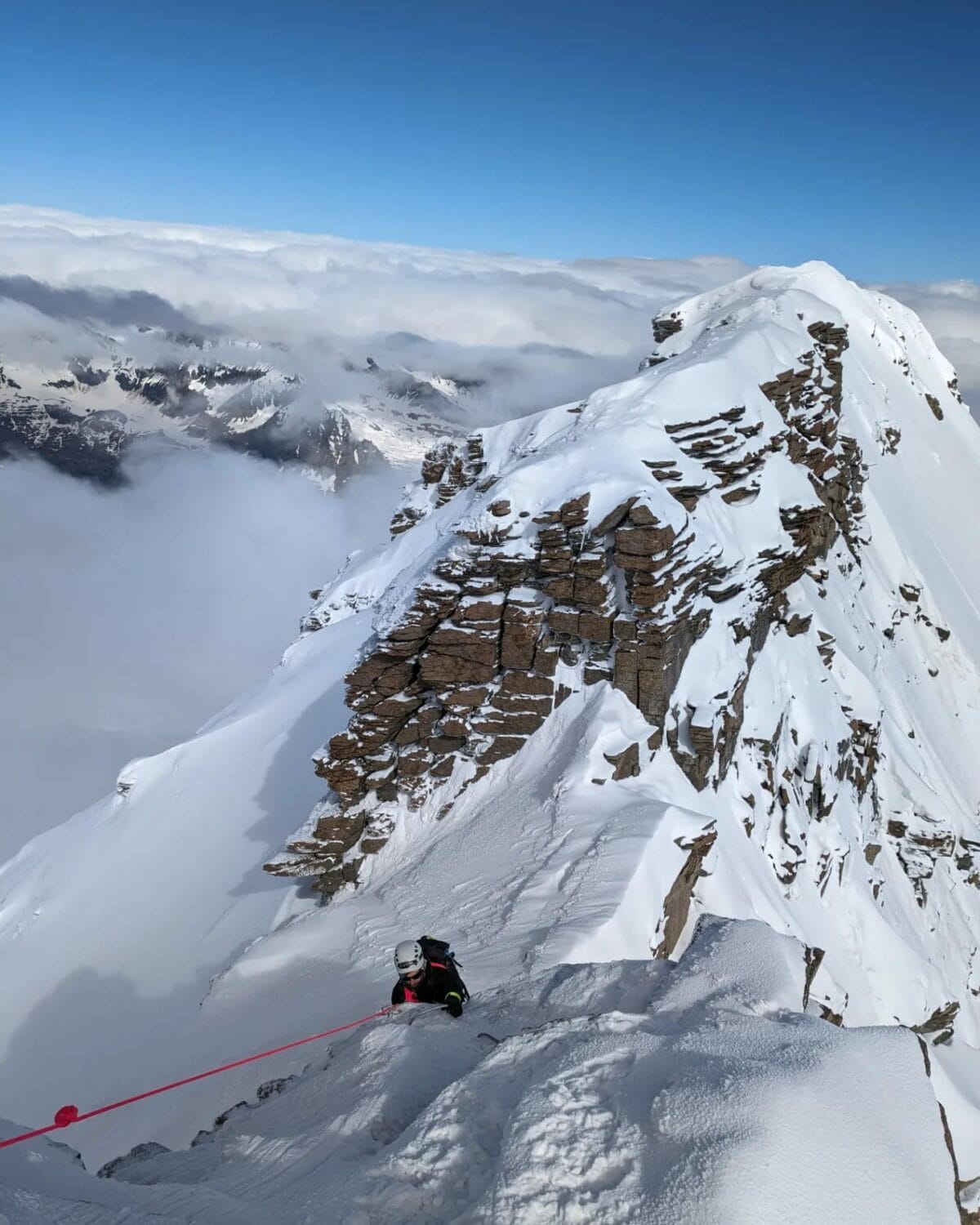
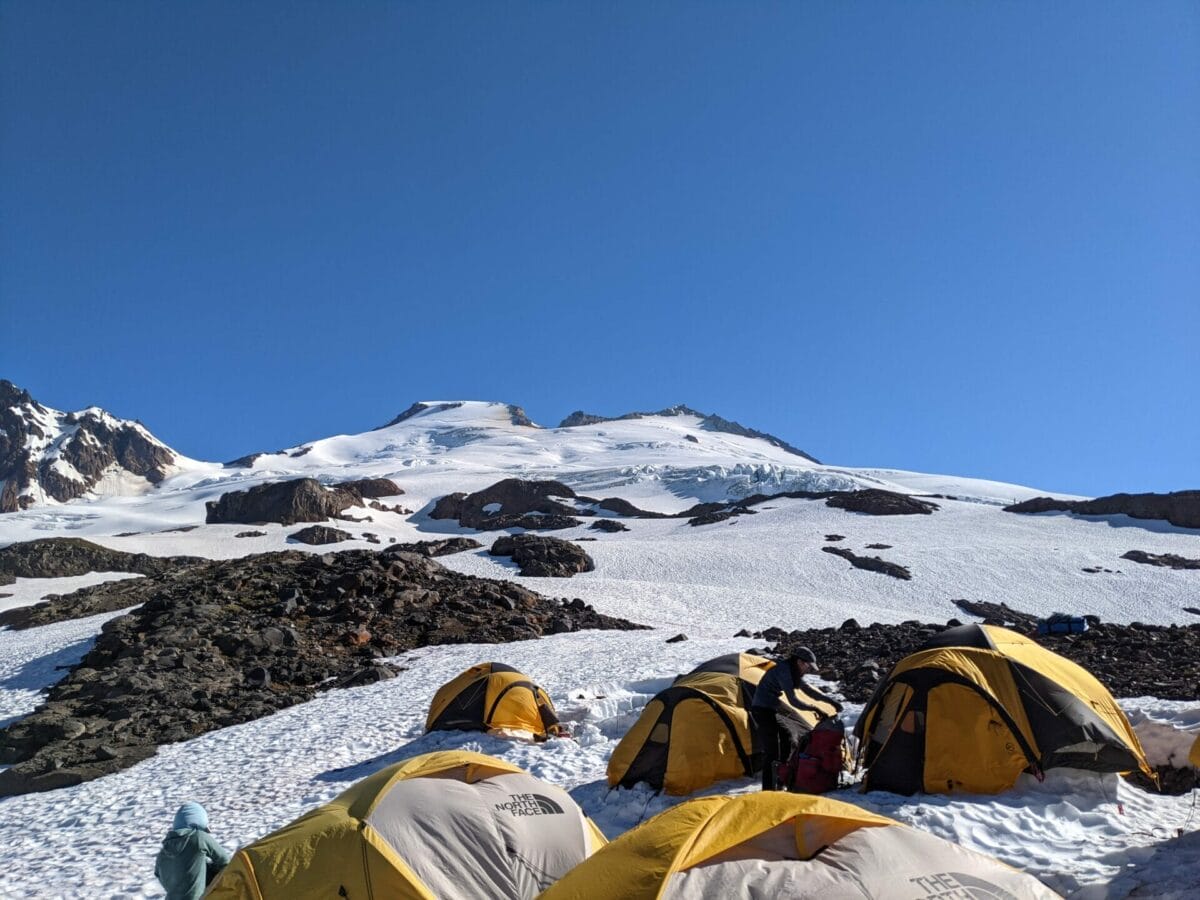
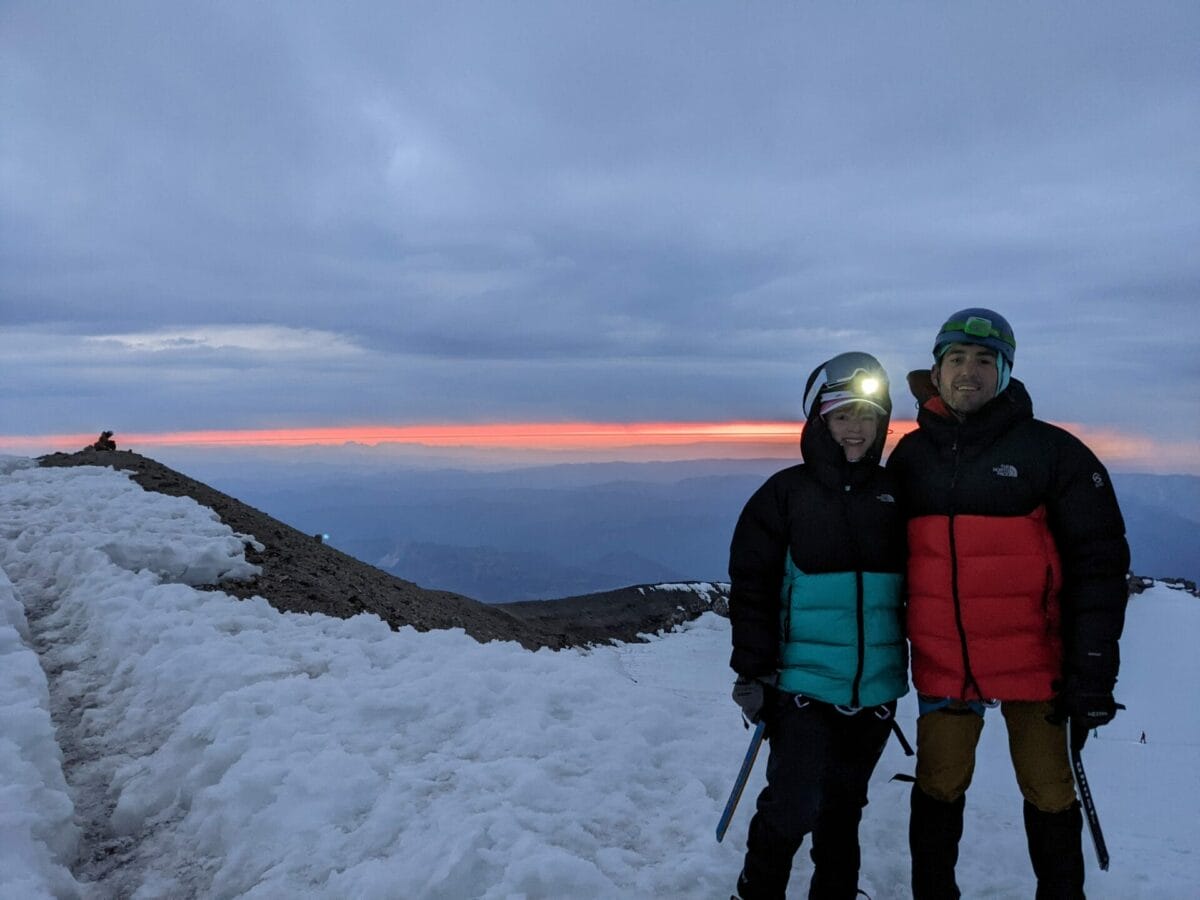


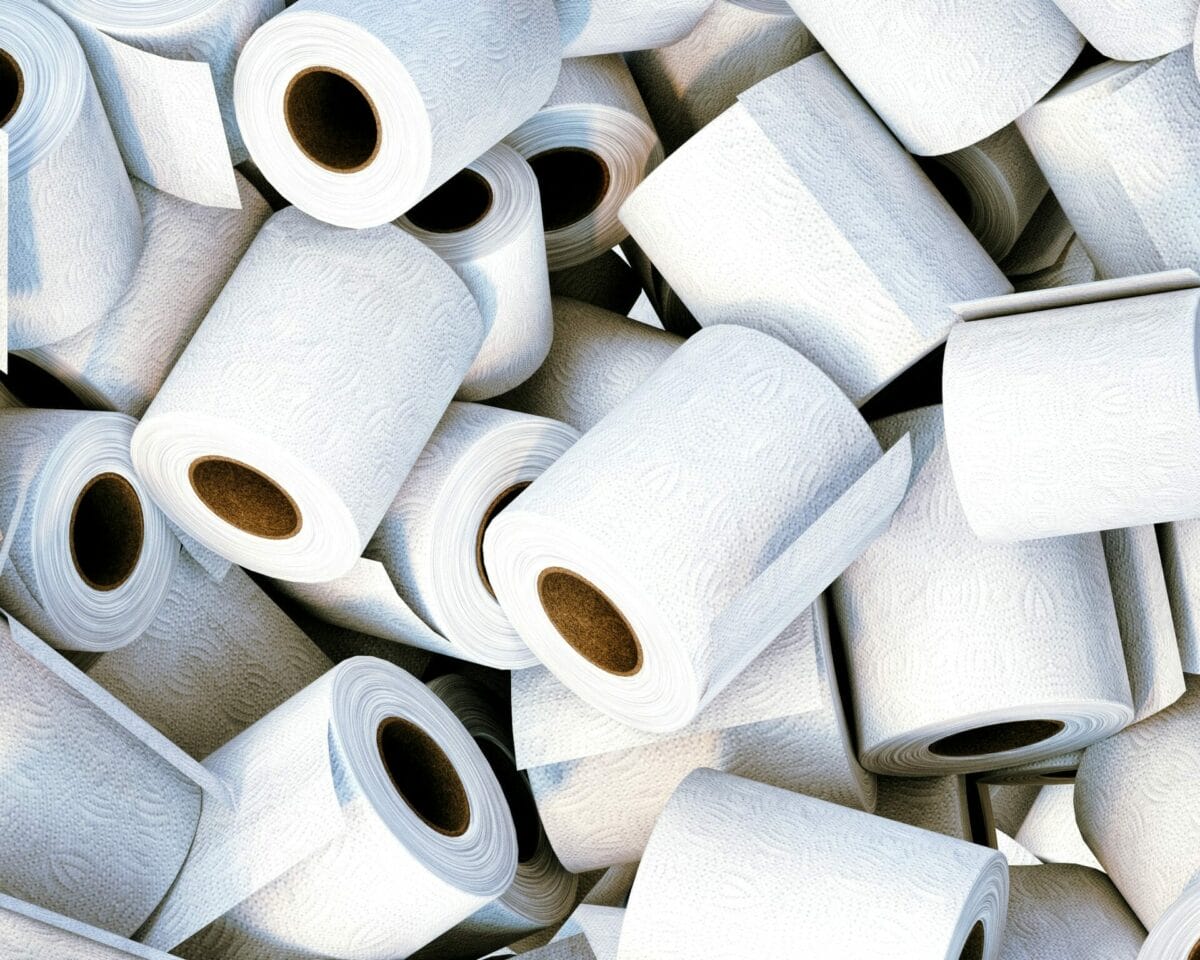
Sign up for updates that come right to your inbox.